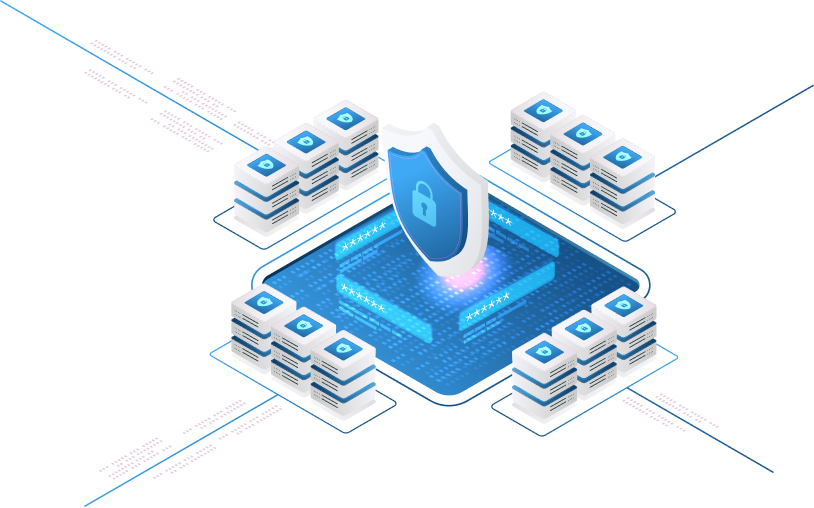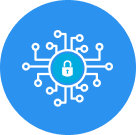What is Zero Trust?
Zero Trust is a security approach that prioritizes verifying the security of a network or device before granting access to it. This approach was created in response to the growing number of security threats posed by the increasing number of mobile and remote workers, bring your own device (BYOD) policies, shadow IT, and cloud services.
As businesses continue to undergo digital transformation, the corporate networks, infrastructures, applications, and data are rapidly moving beyond traditional on-premises setups to the cloud, edge devices, mobile devices, value-chain partners, and others. To address this change, organizations must provide a flexible and secure work environment for their employees, allowing them to work from anywhere while maintaining control over security at all times.
The Zero Trust approach starts by assuming that all devices, networks, and users are potentially compromised, and verifies their security before granting access. This helps to minimize the risk of a security breach and protect sensitive information. Zero Trust is a critical component of modern security strategies, as it helps organizations to secure their digital assets and provide a secure work environment for their employees.

The trend towards cloud adoption continues to surge, with market growth estimated at over 30% annually according to industry analysts. This shift to cloud technology is driven by the numerous benefits it offers, including increased scalability, flexibility, and cost-effectiveness.

Zero Trust Is An Ideology, A Concept,
A Process, Not Just A Product!
Zero Trust is a comprehensive cybersecurity strategy that prioritizes the protection of
critical resources such as services and data. Unlike traditional security models, it
operates on the principle of never automatically granting trust but rather continuously
evaluating it.
iHealth offers innovative cybersecurity solutions that allow for secure collaboration while
ensuring an uninterrupted user experience and high levels of user satisfaction. The
company's cybersecurity solutions guarantee high-quality service that guarantees safe data
transfer for each individual.
What is Zero Trust Architecture
Zero Trust Architecture (ZTA) is a comprehensive cybersecurity plan that leverages the principles of the Zero Trust philosophy. It encompasses the relationships between components, the planning of workflows, and the implementation of access policies. The end result of a Zero Trust Architecture plan is the creation of a secure enterprise network infrastructure (physical and virtual) with clear operational policies. According to NIST, ZTA is a vital component of an organization's cybersecurity strategy, as it helps to ensure the protection of critical resources and maintain the integrity of the network.
What is Zero Trust Network Access (ZTNA)?
Zero Trust Network Access (ZTNA) is a crucial aspect of the Zero Trust philosophy, focused on securing access to applications and their data. ZTNA recognizes that users, applications, and data may not always reside on a trusted network and therefore requires continuous evaluation of the security posture. This approach involves considering various factors such as the user, device, requested resource, and the overall enterprise security risk posture before granting access. ZTNA provides a proactive and thorough approach to network security, ensuring that critical resources remain protected at all times.
Benefits of Zero Trust


Enhanced Data Access Visibility
Zero Trust approach enhances visibility into data access, enabling organizations to identify security risks and protect sensitive information through continuous evaluation of user, device, and resource context.


Minimized vulnerability to be attached
Zero Trust approach reduces the risk of system breaches through continuous evaluation and monitoring of access requests to protected information and assets.


Consistent and streamlined user experience
Zero Trust approach facilitates the adoption of cloud and remote work by enabling flexible and secure work environments


Why Choose iHealth?

User Identity Management
Balancing security and efficiency is essential in managing user identities, as their access needs are constantly evolving. Quickly granting users access to the applications and information they need to complete their daily tasks efficiently while still maintaining security can be a challenge. Trusted digital identities, such as those offered through PKI, and Identity Governance and Administration services provide a secure and efficient solution for managing user identities across multiple sites and streamlining access policies. These solutions are available as both an appliance and a service.
Simplified and secure access from any location
Find ways to streamline and secure identity and access management for your organization, including logical access control, multi-factor authentication, identity federation, and seamless single sign-on (SSO). Implement secure solutions that balance protection with ease-of-use. Utilize web access management for secure remote access, implement a centralized single sign-on for simple authentication, and utilize smart card technology for various secure functions like system login, email, signatures, and web authentication.


Acquire Enhanced Insight and Authority over Your Information
With the rise of remote work and cloud-based apps, it's crucial to secure sensitive data no
matter where it's located.
Encrypt data on all platforms: Protect confidential
information by encrypting data on
virtual machines, databases, workstations, and applications.
Data Governance: Classify data to understand where it's
stored and how security is managed.
Cloud Access Security Broker (CASB) Enforce data privacy and
compliance policies across all cloud apps, including shadow IT.
Six Pillars of Zero Trust
The Six Pillars of Zero Trust are considered the foundational elements of a
successful Zero
Trust implementation. These six pillars are:

Implement multifactor authentication
Require multiple forms of authentication to ensure the identity of users.

Monitor And Detect
Continuously monitor access to sensitive data and detect any unusual or suspicious activity.

Enforce Least Privilege
Grant the minimum amount of access necessary to perform specific tasks, reducing the attack surface.

Verify Identity
Authenticate and verify the identity of users, devices, and systems before granting access.

Segment The Network
Segment the network into smaller, isolated segments to minimize the impact of a security breach.

Protect Data
Encrypt data both at rest and in transit to prevent unauthorized access.











